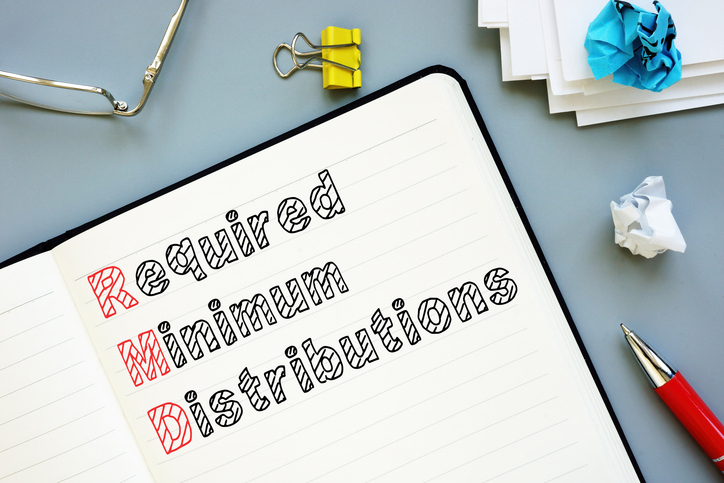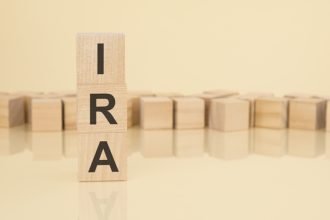Once you begin taking required minimum distributions (RMDs) at age 73, you must withdraw a set amount each year from your pre-tax retirement accounts. If you don’t need that money for living expenses, you can still use it productively. Many retirees choose to reinvest their RMDs in a taxable brokerage account, add to emergency savings, buy income-producing investments, pay down debt, or use part of the funds for qualified charitable distributions to reduce taxable income. A financial advisor can help you decide which option supports your overall retirement plan.
What to Consider If You Want to Reinvest Your RMDs
Once you take your RMD, the money becomes taxable income, but you can still put it to work. After paying the taxes owed, you can reinvest the remaining funds in a regular investment account. Common options include mutual funds, exchange-traded funds (ETFs), dividend-paying stocks, or high-yield savings products. The goal of this strategy is to keep your money growing, even though it has left your retirement account.
Before reinvesting, think about how soon you may need the money. If you expect to use it within a few years, you may want safer choices such as certificates of deposit (CDs), money market funds, or short-term Treasury bonds. If you can leave the funds invested for longer, a mix of stock and bond funds can offer both income and growth potential. It’s also important to review how new investments could affect your taxes, since earnings in a taxable account may be reported each year.
Reinvesting your RMD can make sense for retirees who already have steady income from Social Security, pensions, or annuities and who do not rely on RMDs to pay regular expenses. It can also work for retirees who want to grow their portfolios for future healthcare costs or leave more assets to heirs. Keeping this money invested can help preserve your purchasing power over time.
1. Reinvest Your RMD in a Taxable Portfolio
After paying the taxes owed on your RMD, you can move the remaining funds from your traditional IRA, SEP IRA, SIMPLE IRA, 401(k), or 403(b) into a regular investment account. This keeps your withdrawn money invested and gives it the potential to continue growing even after it leaves a tax-deferred account.
You can also transfer assets in kind from your retirement plan to a taxable account instead of selling them. This means you move the same investments, such as mutual funds, ETFs, or individual stocks, and the value of that transfer counts toward your RMD. The IRS only requires that you take the withdrawal and pay the tax on it. You are not required to sell or spend the money.
Taxable accounts can generate income and capital gains that you may have to report each year. A financial advisor or tax professional can help you review your reinvestment options, manage the tax effects, and make sure the plan fits your overall retirement goals.
2. Build Security With an Annuity
Funding an annuity with RMDs can make sense for retirees who already have sufficient liquid assets for short-term needs and want to secure part of their future income. This strategy turns part of your retirement savings into predictable payments while keeping other assets available for growth or emergencies.
An annuity is a contract with an insurance company that exchanges an upfront payment for a guaranteed stream of income. Some retirees use annual RMD withdrawals to gradually fund an annuity that begins payments in their late 70s or early 80s, when other income sources may decline.
For example, a retiree who receives an annual RMD could use those withdrawals to buy portions of a deferred income annuity. And by age 80, those purchases might provide extra monthly income for life, depending on interest rates and contract terms.
Different types of annuities offer different features. Fixed annuities pay a set amount, while variable and indexed annuities link payments to investment performance or a market index. Some contracts include inflation riders that increase payments over time, though these usually reduce the initial payout. Because costs, surrender periods and guarantees vary, it’s important to compare options before committing funds.
3. Build Wealth and Security With an Emergency Fund

An emergency fund gives you quick access to cash for unexpected costs such as home repairs, medical bills, or travel to assist family. Having this reserve can prevent you from selling long-term investments at the wrong time.
In retirement, market declines can have a bigger impact because you may rely on your portfolio for income. An emergency fund helps reduce that risk by providing a cushion during periods when markets fall. Instead of withdrawing from your investment accounts during a downturn, you can draw from your cash savings until markets stabilize.
You can keep your RMD funds in safe, interest-bearing accounts such as high-yield savings accounts, money market funds, or CDs. For example, if you receive a $10,000 RMD, placing it in an account that earns 4% annual interest adds both liquidity and modest growth. These accounts protect principal and allow easy access without market exposure.
4. Give to Charity and Minimize Taxes
Reinvesting your RMD in a qualified charitable distribution (QCD) can reduce taxable income and improve the efficiency of your retirement withdrawals. A QCD allows you to transfer up to $108,000 in 2025 from an IRA directly to an approved charity once you reach age 70½1. And if you are 73 or older, the amount transferred also counts toward your RMD, but is excluded from your adjusted gross income (AGI).
Because the QCD amount never enters taxable income, you receive a full benefit even if you use the standard deduction. For example, if your RMD totals $30,000 and you direct $12,000 to a charity through a QCD, only $18,000 appears as taxable income. The smaller income figure can help keep you in a lower tax bracket and reduce the impact of income-based phaseouts.
Lowering AGI can also help you reduce income taxes on Social Security benefits, limit exposure to Medicare income surcharges, and maintain eligibility for certain tax credits.
5. Pay Taxes on a Roth Conversion
Even though you cannot use RMD withdrawals to complete Roth IRA conversions, you can use them to pay the taxes triggered by those conversions. So, for example, if your RMD is $40,000, you cannot satisfy that requirement by converting $40,000 to a Roth IRA. You must first withdraw the $40,000 and move it into cash or a taxable account. Once the withdrawal is complete, you can use part or all of that $40,000 to pay the income taxes due on a separate Roth conversion completed that same year.
When you move assets from a traditional IRA or 401(k) into a Roth IRA, the converted amount is treated as taxable income for that year. Using your RMD to cover the tax bill allows you to convert other funds without reducing the total amount added to your Roth account.
This approach can help you manage future tax exposure and reduce required withdrawals over time. Once assets are in a Roth IRA, they are no longer subject to annual RMDs, and qualified withdrawals are tax-free. By using RMDs to pay conversion taxes each year, you can gradually shift money out of taxable retirement accounts and create more flexibility for future income planning.
Bottom Line

Once you start taking RMDs at age 73, you have to withdraw money each year, but you can still use it wisely. After paying taxes, you can invest the rest, build extra income with an annuity, keep cash for emergencies, give through a QCD to lower taxes, or use it to pay taxes on a Roth conversion. Your choice will depend on your income, expenses and goals. A financial or tax professional can help you decide how to make the most of your RMDs.
Tips for Building Your Emergency Fund
- A financial advisor can help you determine how much to keep in an emergency fund and where to hold it for safety, liquidity, and modest growth. Finding a financial advisor doesn’t have to be hard. SmartAsset’s free tool matches you with vetted financial advisors who serve your area, and you can have a free introductory call with your advisor matches to decide which one you feel is right for you. If you’re ready to find an advisor who can help you achieve your financial goals, get started now.
- If you want to build your savings up consistently, consider setting up automatic transfers from your checking to your savings accounts. This approach could help you make saving a routine part of your financial life.
Photo credit: ©iStock.com/Andrii Dodonov, ©iStock.com/shapecharge, ©iStock.com/Iuliia Zavalishina
Read the full article here
















